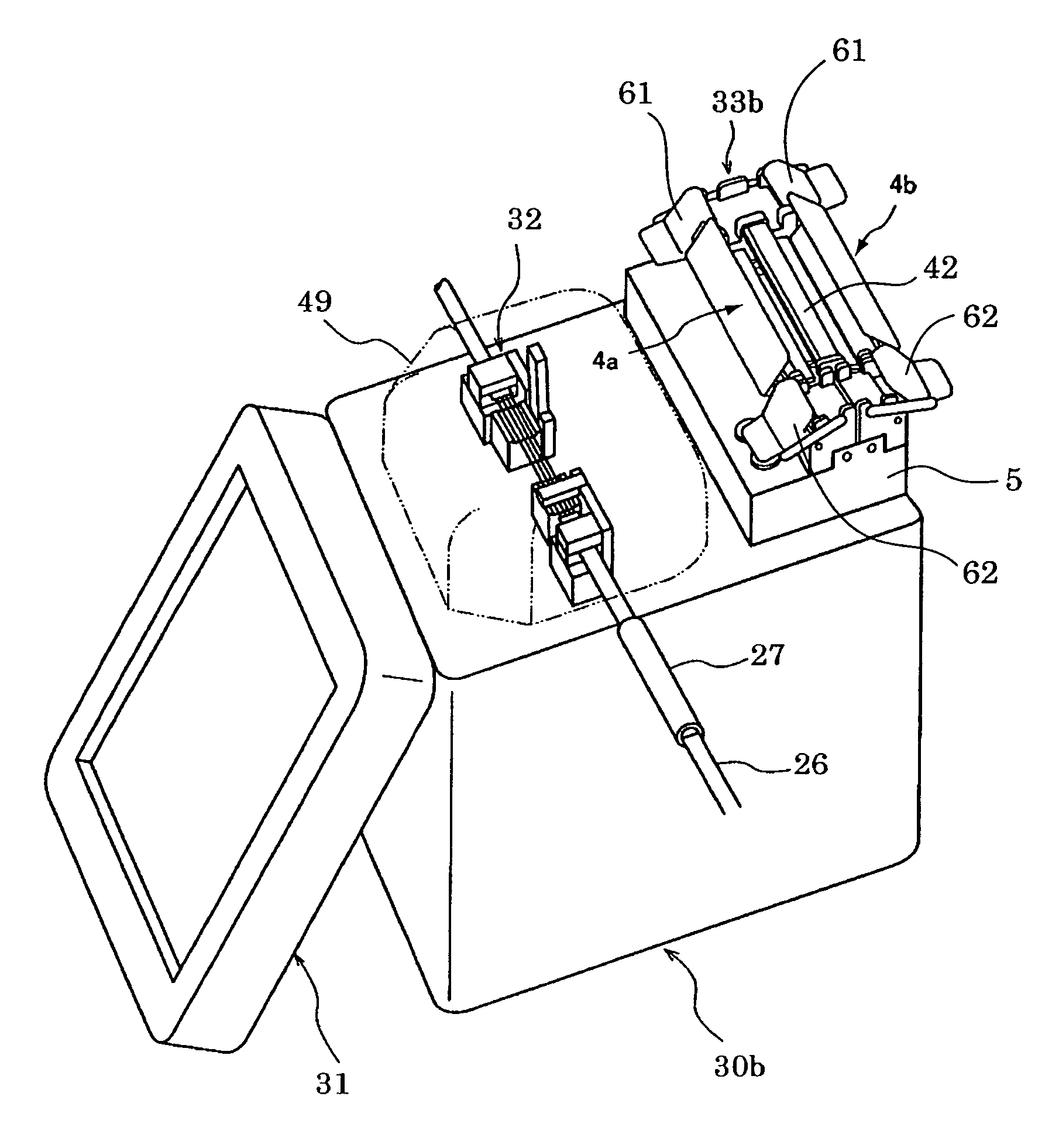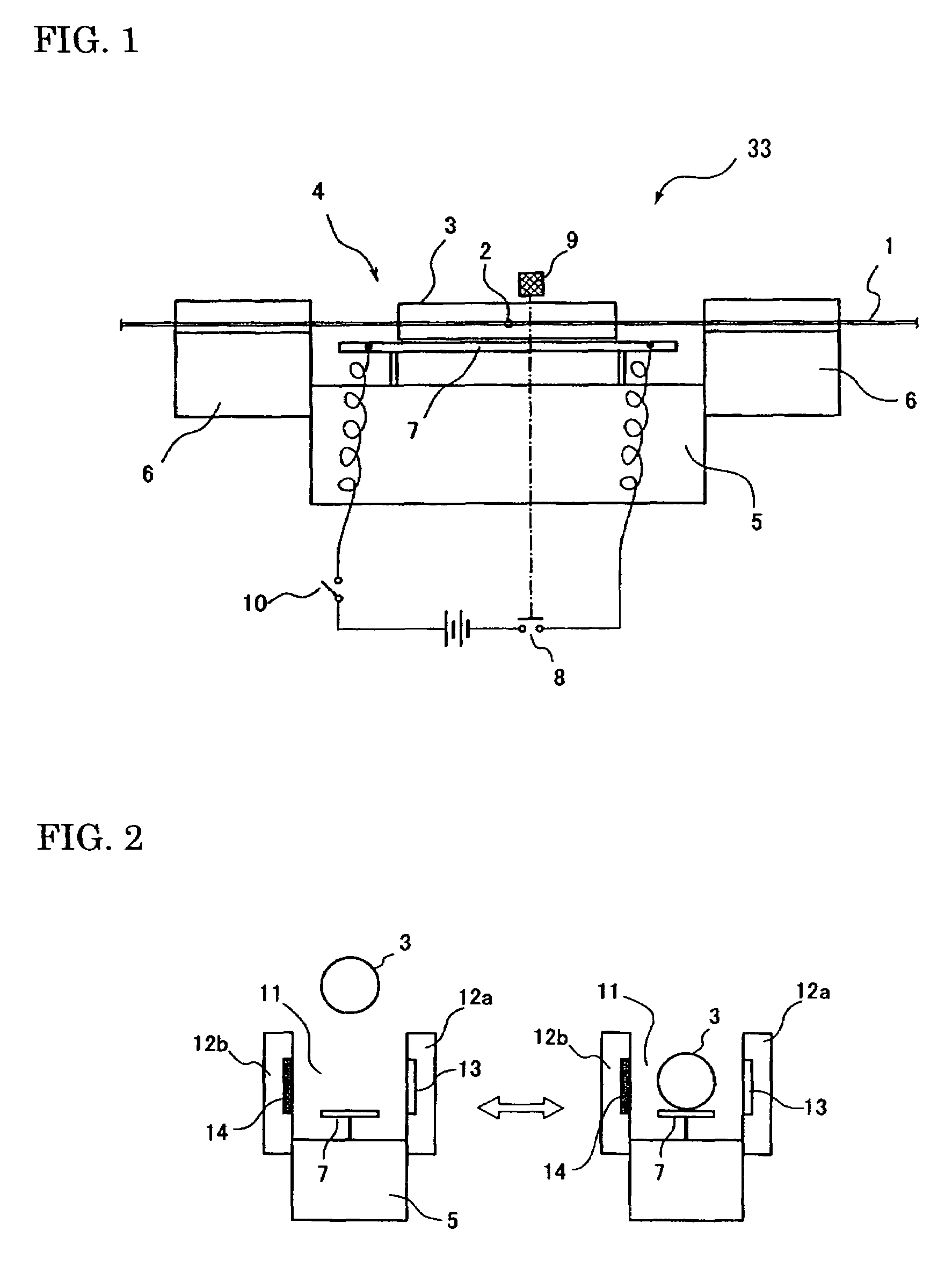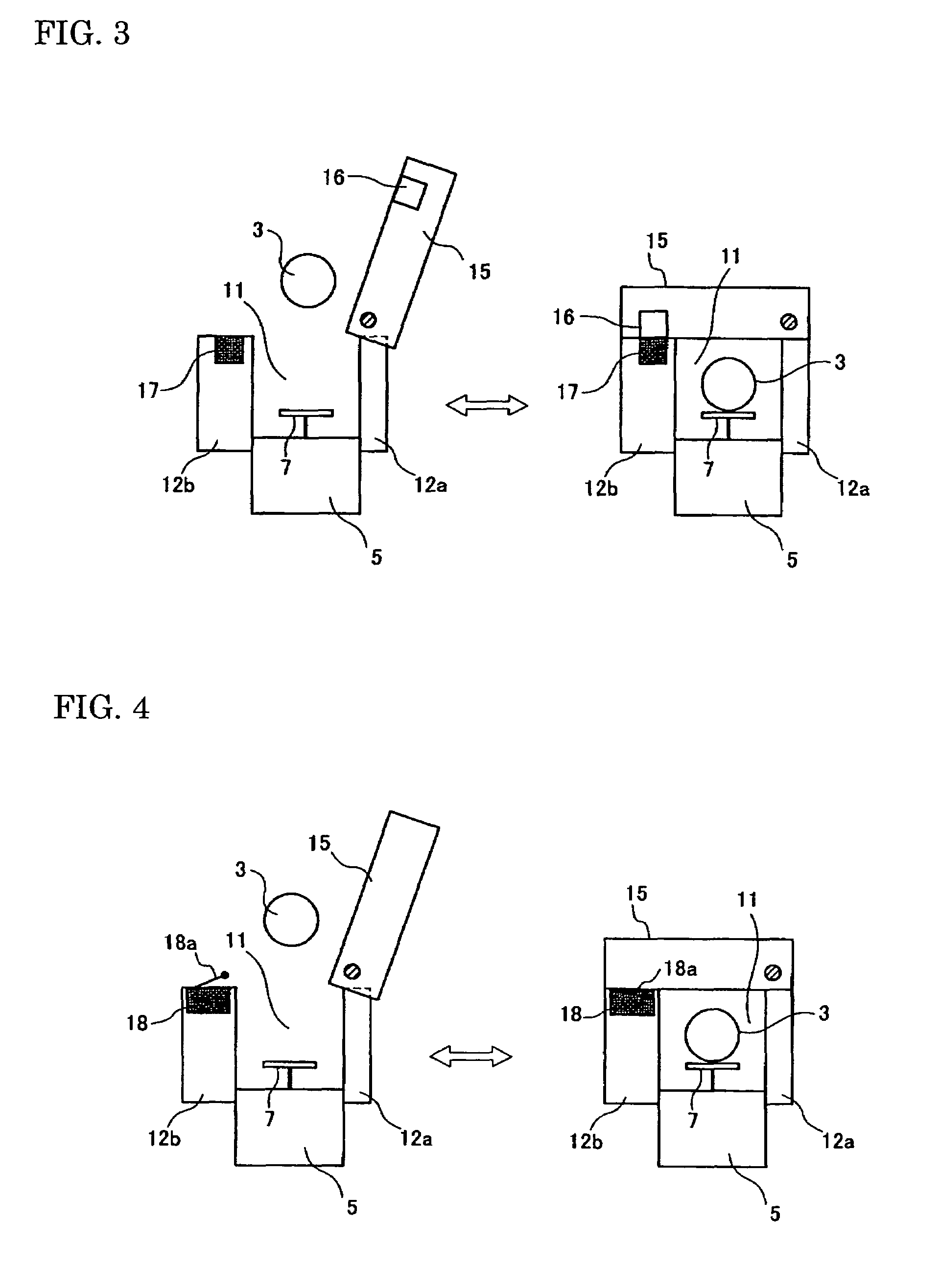Splice protection heater, fusion splicer including the splice protection heater, and fusion splicing method
a technology of fusion splicing and heater, which is applied in the direction of optics, instruments, optical light guides, etc., can solve the problems of inability to perform proper protection process, fusion-spliced portion may be broken or damaged, and loss of time, etc., to achieve efficient thermal protection process, rapid and efficient performance, and sufficient heating time
- Summary
- Abstract
- Description
- Claims
- Application Information
AI Technical Summary
Benefits of technology
Problems solved by technology
Method used
Image
Examples
first embodiment
[0033]FIG. 1 is a schematic drawing showing of a splice protection heater according to the present invention. The splice protection heater 33 performs a thermal protection process with a heating part 4 on an optical fiber 1 (single fiber or optical fiber ribbon) at a fusion spliced portion 2 covered with a protection sleeve. The heating part 4 is provided with a pair of clampers 6 disposed at bilateral ends of a base 5, and a heating element 7 that is disposed at a center portion of the heating part. The heating part 4 supports a fusion-spliced optical fiber without slack by the left and right clampers 6.
[0034]After the fusion-spliced portion 2 that is covered with the protection sleeve 3 has been placed on the heating element 7, the heating part 4 is enclosed by a heater cover (not shown in FIG. 1). Then, a switch 8 is turned ON to provide current to the heating element 7 and to heat shrink the protection sleeve 3. When heating process for the protection sleeve 3 ends after heating...
second embodiment
[0052]FIGS. 12˜15 are schematic diagrams illustrating a splice protection heater according to the present invention. FIG. 12 is a perspective view, FIG. 13 is a front view with the heater cover removed, FIG. 14 is a cross sectional view taken along a section line a-a of FIG. 13 with the clamper and heater cover opened, and FIG. 15 is a cross sectional view taken along a section line b-b of FIG. 13 with the clamper and heater cover opened, also. As shown in FIG. 12, the splice protection heater 33b is provided with at least two heating unit 4a and 4b as a heating part 4 on a base 5, such that heating elements 7a and 7b, which can be turned ON and OFF by independent switches, are respectively disposed in each heater 4a and 4b. FIG. 12 shows a state in which the optical fiber 1 and the protection sleeve 3 have not attached to the splice protection heater.
[0053]Each of the heating unit 4a and 4b has a housing part to accommodate the protection sleeve 3, and each of the heating unit 4a a...
PUM
 Login to View More
Login to View More Abstract
Description
Claims
Application Information
 Login to View More
Login to View More - R&D
- Intellectual Property
- Life Sciences
- Materials
- Tech Scout
- Unparalleled Data Quality
- Higher Quality Content
- 60% Fewer Hallucinations
Browse by: Latest US Patents, China's latest patents, Technical Efficacy Thesaurus, Application Domain, Technology Topic, Popular Technical Reports.
© 2025 PatSnap. All rights reserved.Legal|Privacy policy|Modern Slavery Act Transparency Statement|Sitemap|About US| Contact US: help@patsnap.com



